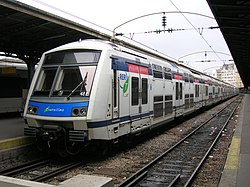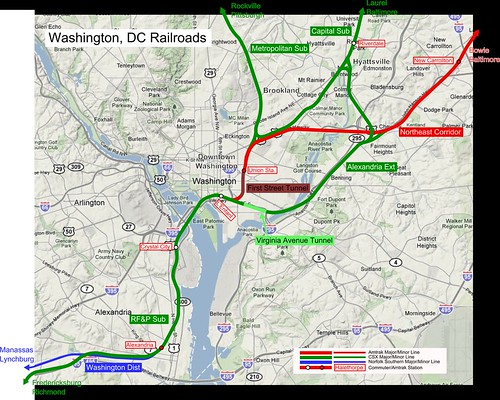GlobalistPotato
Lead Service Attendant
- Joined
- Feb 8, 2011
- Messages
- 344
One thing I was wondering is that the proposed new tunnels under Baltimore are planned to be able to fit Double-stack container trains under electrified lines. And if the tunnels can fit doublestacks, they can definitely fit superliners, or any other type of double-decker cars.
As part of Amtrak's plan for true-HSR in the Northeast, there will be the two new tunnels as part of the $20 billion Portal project.
Considering that Amtrak will be able to big two new tunnels, I would assume that they would make them be able to fit double-stacks and Superliners.
Now, I know what you're going to say: Superliners can only work at low level platforms! Well, yes, but...
1) As part of any sort of Penn Station expansion project (either Moynihan or Penn South), then I would expect several low-level platforms to be built.
2) Superliners aren't the only double-decker trains that could be used at Penn Station. Think of double-decker high speed trains, like the TGV Duplex 3882722104_6c69de9b34_b.jpg , or the E1 and E4 series Shinkansen JR_East_Shinkansen_E4.jpg .
Question though: Are the Balt-Penn Station tunnels and the South and East river tunnels a cost included in the $50 billion NEC master plan, or the $117 true-HSR line?
Second question: Are locomotives on a train (high-speed or otherwise) included in the max-car limit for a platform? And Penn Station's max-car length is 16 cars, right?
A little off-topic, but here's my findings about the capacity of the Acela versus true high speed trains that could operate in the Northeast...
The Acela trainset has 6 cars between the two trainsets. One of them is the cafe car, another is first-class car, with 44 seats. The other three are the business-class cars, with 260 seats. That's 304 seats total over five cars, or an average of 60.8 seats per car.
Assuming a HST has the same average seating and has a cafe car, and two power cars. That gives 13 cars. Multiply that by 60.8 and the result is 790 seats per train. Based on the TGV duplex, double-decking a HST increases capacity by 45%. That gives us 1146 seats in a double-decker HST.
Should the new Portal Tunnels be able to fit double-decker trains, or should it be the same loading gauge as the existing tunnels?
Thoughts? Information?
As part of Amtrak's plan for true-HSR in the Northeast, there will be the two new tunnels as part of the $20 billion Portal project.
Considering that Amtrak will be able to big two new tunnels, I would assume that they would make them be able to fit double-stacks and Superliners.
Now, I know what you're going to say: Superliners can only work at low level platforms! Well, yes, but...
1) As part of any sort of Penn Station expansion project (either Moynihan or Penn South), then I would expect several low-level platforms to be built.
2) Superliners aren't the only double-decker trains that could be used at Penn Station. Think of double-decker high speed trains, like the TGV Duplex 3882722104_6c69de9b34_b.jpg , or the E1 and E4 series Shinkansen JR_East_Shinkansen_E4.jpg .
Question though: Are the Balt-Penn Station tunnels and the South and East river tunnels a cost included in the $50 billion NEC master plan, or the $117 true-HSR line?
Second question: Are locomotives on a train (high-speed or otherwise) included in the max-car limit for a platform? And Penn Station's max-car length is 16 cars, right?
A little off-topic, but here's my findings about the capacity of the Acela versus true high speed trains that could operate in the Northeast...
The Acela trainset has 6 cars between the two trainsets. One of them is the cafe car, another is first-class car, with 44 seats. The other three are the business-class cars, with 260 seats. That's 304 seats total over five cars, or an average of 60.8 seats per car.
Assuming a HST has the same average seating and has a cafe car, and two power cars. That gives 13 cars. Multiply that by 60.8 and the result is 790 seats per train. Based on the TGV duplex, double-decking a HST increases capacity by 45%. That gives us 1146 seats in a double-decker HST.
Should the new Portal Tunnels be able to fit double-decker trains, or should it be the same loading gauge as the existing tunnels?
Thoughts? Information?





